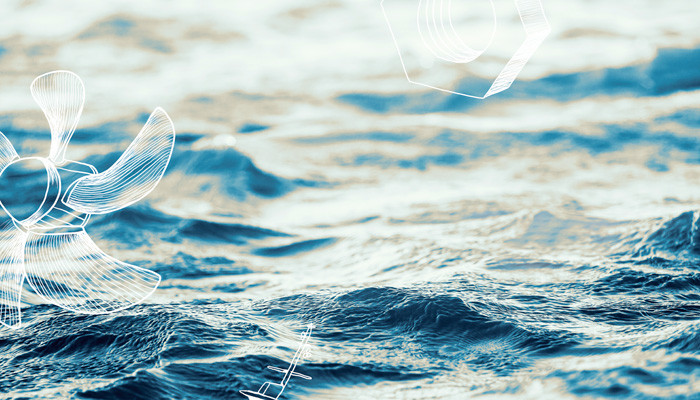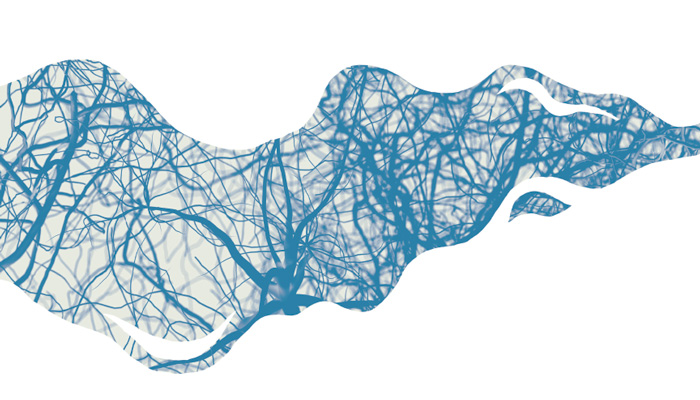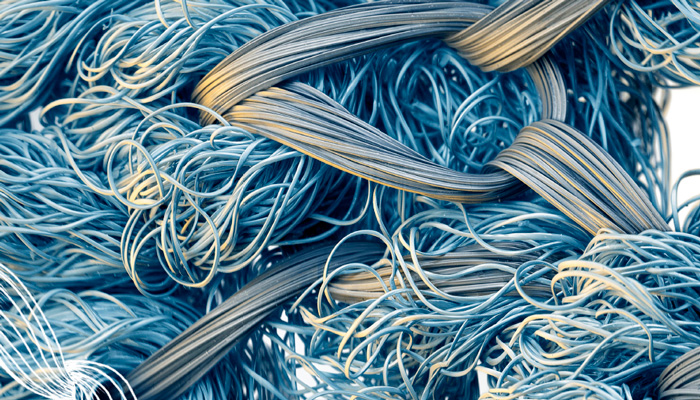The theory and practice of multidisciplinarity
The increasingly complex problems of the modern world can rarely be solved through the efforts of a single branch of science. But how is multidisciplinarity implemented in practice?

What will a cruise ship look like in 2035? Will it be made from entirely new materials, be powered by solar energy and have a battery in the place of an engine, will the vessel's emissions to air and water have been squeezed to zero? These are the types of matters pondered by the Cruise & Ferry 2.0 research project lead by Professor Jani Romanoff. It is a continuation of the Cruise & Ferry Experience concept, which has been running at Aalto University since 2010 on the Master's degree level and looks at cruise ships from a multidisciplinary viewpoint.
“Our goal is to take our Cruise & Ferry expertise even further, to the doctoral thesis and world-class research level. We examine concepts that others dare not even think of. The aim is to find ventures in which several schools of Aalto University can participate in cooperation with the business sector,” says Romanoff, who works in the Marine Technology research group.
The idea of Cruise & Ferry Experience is to draft three Master's theses on the same subject. The authors can be from any one of the six Aalto schools, i.e. the thesis subject can be related to technology, design or business. This idea originated from Marine Technology Professor Pentti Kujala and Markus Ahola, who just completed a doctorate on the cruise ship design process at the School of Arts, Design and Architecture.
“The problems of this field are usually comprehensive, making it necessary to view them from a number of perspectives,” Romanoff reasons.
An example of a common subject for research is a new, narrower type of cruise ship deck structure. Three theses examined how this would affect the user experience, what frame beam measurements would be required and what kinds of new services such a structure would enable to be offered on the ship.
It has not always been possible to produce a full trio of theses, but almost 30 such sets have already been completed. The concept has also earned awards for its innovativeness.
Safer bone surgery
Medical student Visa Sippola was taking part in a neurosurgery research group at the University of Helsinki, when a problem started bothering him: drilling bone in surgery can easily damage nerves and other tissue. Would it be possible to develop a device that would make the procedure safer for patients?
Sippola contacted Aalto University Professor Petri Kuosmanen, who introduced him to mechanical engineering student Shahab Haeri. This gave birth to the Surgify team, which was soon joined by industrial engineering and management student Juho Carpén. Sippola is now the medical director of Surgify, while Haeri is the technical director and Carpén the business director.
“The foundation for innovation in medical technology is formed by a union of medical and technological expertise. The medical expert will know about the everyday concerns of clinical activities, like what the most significant problems to overcome are, while the engineer is the physician's best friend. The combination makes it possible to bounce problems and solutions off one another as well as enables the identification of previously unknown combinations,” Sippola illustrates.
A combination of clinical expertise, technology and business is not yet enough in medicine, however. The sector is heavily regulated, and regulation can have an impact on technological solutions as well. This is why the team was joined by Jukka Kreander, who is responsible for quality management and regulatory compliance. Sippola emphasises that, no matter how idealistic your research goals are, commercial expertise will be needed, too.
“There's no conflict in this. If you want as many people as possible to benefit from your invention, it will have to be commercialised. When we ourselves realised this, things started to move forward and we secured more funding.”
Surgify is a Research into Business project. The RiB programme is funded by Tekes and administered by Aalto University. Surgify now intends to research the subject further and explore options for commercialisation. Right now, the most attractive alternative appears to be the forming of a spin-off company.

Textile fibres in closed circulation
Professor Herbert Sixta's Ioncell F research group is also multidisciplinary. It is developing spinning technology for a new kind of artificial cellulosic fibre. The group made it to the semifinals of the Helsinki Challenge science-based competition and idea accelerator.
Cellulose Technology Professor Sixta was also preoccupied with a problem demanding a solution: is it possible to develop a new environment-friendly textile material that is fully recyclable? The world has gradually woken up to how the cultivation of cotton takes up too much arable land and consumes an enormous amount of water. Artificial fibres could offer a solution, but the majority of them are oil-based.
“During the first three years, we set up our infrastructure and recruited personnel. The Helsinki Challenge team is a very balanced group, which, in addition to ourselves, involves the University of Helsinki and two companies, Stora Enso and Marimekko,” Sixta details.
Sixta's Ioncell project differs from other similar ventures because its goal is to achieve completely enclosed circulation: in addition to cellulose, material recycled from old fabrics can also be used as a raw material for the textile, and the solvents and water used in the production process are recycled as well.
The team consist of people from almost every Aalto school, Sixta reckons. Chemical technology researchers have an interest in the process, mechanical engineers in designing the production equipment and people from the School of Arts, Design and Architecture in the end product.
“We are even cooperating with metallurgy researchers, who want to find out if cellulose could be used to coat metals. But multidisciplinary cooperation requires a common goal and for everyone to benefit – without this, it can never work.”
Wood-based textile fibres already exist. Examples include traditional viscose and rayon as well as the newer Tencel. Organic chemistry researchers from the University of Helsinki originally planned to develop a new kind of solvent for the separation of cellulose.
“The solvents we utilise are actually only new in textile application, as we discovered that solvents familiar from other fields would work well here. We aimed for properties similar to viscose or cotton, but the fabric ended up being of an even better quality, pleasant to touch and very durable.”
Common language, special expertise
Marine Technology Professor Jani Romanoff stresses that multidisciplinarity requires the team to not only understand the totality, but also to have deep expertise in each individual's specialist field.
“A team has to share a common language, its members must be able to communicate with representatives of other fields. But you also have to go deep, everyone must explore their own area of special expertise in addition to synthetic thinking.”
In Cruise & Ferry, a common language is established via a relatively concise 25-credit shared module. Surgify's Visa Sippola points out that having a personal interest in multidisciplinarity also means a lot.
“I was guided to this subject by some kind of inner engineer, which is in my blood thanks to my mechanical engineer dad. Even at medical school, I've always been interested in the latest technology,” Sippola says.
Professor Herbert Sixta emphasises his own 30 years of experience, first in the textile fabric manufacturing industry and then as a researcher. It has helped him perceive the field from different viewpoints. He also stresses that multidisciplinarity must benefit all parties.
“In Ioncell, the University of Helsinki could have done nothing without us, and vice versa. Furthermore, all parties learned from one another. Cooperation also helps secure funding,” Sixta lists.
Companies also play a central role in multidisciplinary projects. Cruise & Ferry students have been sparred by a steering group, which consists both of Aalto professors from various schools as well as key figures from cruise industry and marine technology companies. Participants include representatives from Meyer Turku as well as the Royal Caribbean cruise line and the design company Foreship.
Stora Enso is taking part in the Ioncell team, which is participating in the Helsinki Challenge, in the capacity of a possible fibre manufacturer, while Marimekko is interested in the end product. Marimekko showcased its first Ioncell dress at a fashion show staged in 2014.
Results coming up gradually
Surgify has now produced a surgical drill bit that only cuts hard tissue, ignoring soft tissue like blood vessels or nerves. It can be used in place of old drill bits, requiring no new surgical equipment, in addition to which surgeons will not need to be trained in its use.
“Many surgeons have already tested the drill bit in preclinical conditions and we've received fantastic feedback. The next step will be operating on real patients,” Sippola says.
The latter half of the year will show how well Ioncell does in the Helsinki Challenge, but it will take several years to discover whether or not the project is a commercial success. It remains to be seen whether large-scale production can be done cost-competitively.
“Next, we'll need a large pilot factory, something that already represents an investment of €10 million. It could possibly be implemented jointly with VTT Technical Research Centre of Finland, but at least one company also needs to be involved. If production can be done profitably, the existence of a market won't be a problem: everyone needs good textiles,” Sixta reminds.
Photos: iStock, 123rf, Science Photo Library
Illustration: Annukka Mäkijärvi

Doctoral-level expertise in shipbuilding
When Ingrit Lillemäe-Avi, a structural analyst at Meyer Turku shipyard, started her marine technology doctoral thesis in 2010, she had her sights set on a career in industry rather than academia.
“I did carefully consider whether doctoral-level studies were a good fit for me in the first place. But I felt that I needed to learn more, deepen my expertise and skills, in order to secure a place for myself in professional life,” says Lillemäe-Avi.
After completing a Bachelor's degree in Estonia, she came to Aalto University for a Master's programme in marine technology, graduating in 2009. Her original intention was to continue her Master's thesis topic, which related to the analysis of fatigue loading in ships, in her doctoral thesis. After a year, however, the topic shifted to the fatigue strength of cruise ship structures because the research group of her thesis instructor Heikki Remes was focusing on this subject area.
“After I switched the topic, the work started to progress rapidly and smoothly. It is important to get support from your group so you don't need to struggle alone and can discuss problems with the others.”
The transition to working life was seamless for Lillemäe-Avi. The research group was already cooperating with Meyer and cooperation deepened further once Lillemäe-Avi started doing post-doctoral research at the company. Her current job includes both performing structural calculations as well as administering the research projects Meyer is engaged with in cooperation with various universities.
“When I started my doctoral thesis, I was fairly sure that I'd wind up working in the corporate sector. Nevertheless, I also considered an academic career, and I still tell myself ’never say never’. My current job enables me to utilise everything I learned earlier. In future, I'm most interested in working on practical applications of research in the space between corporations and academic research.”

